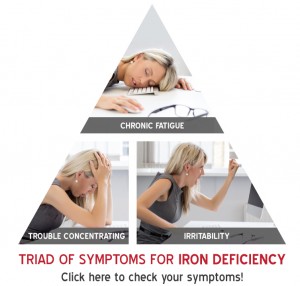You might already know that iron plays an essential role in your child’s health, but did you know that not getting enough of it has the potential to cause life-long issues? Iron helps oxygen move from the lungs to the rest of the body. Thus, iron deficiency can have a lasting impact on your child’s life.
The Impact of Iron Deficiency Now and Later
Many studies have documented effects of iron deficiency on developmental delays in infants and young children. At birth, the brain has only reached 27% of its eventual size and only 10% of its eventual iron levels. This means that the remainder will accumulate throughout childhood, specifically during the first 2 years of life when the majority of brain growth occurs, and through young adulthood.
It’s been found that children who suffer from iron deficiency experience changes in their behavior and performance, such as:
- Issues with concentration and reduced attention span;
- Learning disabilities;
- Reduced intelligence;
- Reduced emotional responsiveness.
As you can see, this may affect the way your child learns and relates to others, which isn’t just a problem now but alters the way they grow and develop.
What You Can Do (The Sooner, The Better)
Fortunately, studies have found that in most cases, treating the iron deficiency – the sooner, the better – can reverse the adverse effects on the brain and restore cognitive function. This may require taking an oral iron supplement, as well as increasing the amount of iron-rich foods in your child’s daily diet.
Some foods high in iron worth adding to your child’s diet include:
- Iron-fortified cereals;
- Poultry;
- Fish;
- Beans;
- Red meat;
- Dark leafy vegetables.
For children ages 1 to 5, the Centers for Disease Control and Prevention recommend giving no more than 24 ounces (710 mL) of whole cow, goat, or soy milk per day. Milk and calcium-rich foods can interfere with the body’s ability to absorb iron (read more about iron absorption inhibitors). Conversely, increasing the amount of foods rich in vitamin C (such as oranges, strawberries, tomatoes, red and green bell peppers, cauliflower, pineapple) can also help to improve overall iron absorption.
Be Proactive!
Iron deficiency is progressive and can go undetected in the early stages. Taking your child for regular check-ups and being aware of the signs and symptoms of iron deficiency can help to prevent your child from developing iron deficiency or iron deficiency anemia.
The signs and symptoms of iron deficiency in children may include:
- Pale skin;
- Feeling tired or weak;
- Swollen tongue;
- Feeling cold/low body temperature;
- Frequent infections;
- Trouble concentrating;
- Pica – unusual cravings for substances with little to no nutritional value (common in cases of iron deficiency is cravings to eat clay and dirt, and chew ice).
If you’re worried that your child is suffering from low iron or is at risk of developing iron deficiency, take him/her to the doctor right away for proper assessment. Iron deficiency can be diagnosed through a variety of blood tests. Be proactive in preventing and treating iron deficiency/iron deficiency anemia in your child to help him/her feel better and help to reverse possible adverse effects.
Content and advice provided on The Iron Maiden is for information purposes only and should not serve as a substitute for a licensed health care provider, who is knowledgeable about an individual’s unique health care needs


